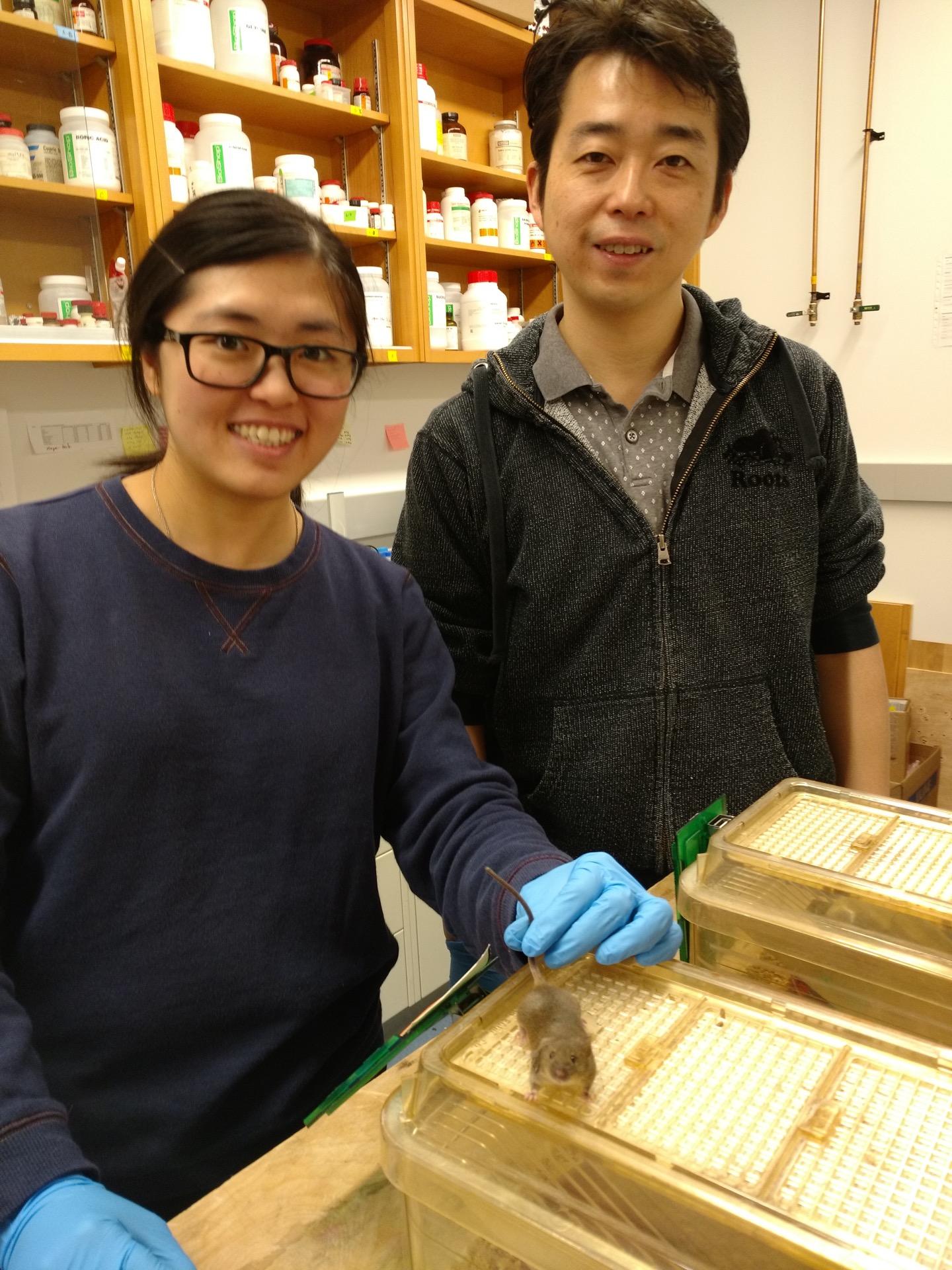
Research
Gene therapy
When people are born with certain gene mutations, they may not be able to produce the protein that is coded for by that gene in sufficient quantities, or the mutation may result in an altered protein that is unable to function normally. If a gene mutation affects a protein that is critical for brain function, this can disrupt normal brain development (i.e. cause a neurodevelopmental disorder).
Using rodent models of human genetic disorders, our laboratory is exploring the use of gene therapy, and specifically adeno-associated viruses (AAVs), as a way to deliver genes into the brain with the goal of correcting the impaired functions of neurons in the central nervous system.

Fragile X Syndrome research
Fragile X Syndrome develops in people who are born with a genetic mutation in the FMR1 gene that interferes with production of the Fragile X Mental Retardation Protein (FMRP). FMRP is a master regulator of the production of hundreds of proteins in the brain; when FMRP is missing or greatly reduced, as in Fragile X Syndrome, the expression (production) of hundreds of proteins is abnormal. Persons with Fragile X Syndrome display the characteristics of autism, cognitive impairment, and sometimes experience epileptic seizures. There is currently no cure.
Our lab is investigating the use of viral vector (AAV) gene therapy to boost production of the FMRP in the mouse and rat animal models of Fragile X Syndrome. In addition to designing optimized AAV vectors for injection into the mutant mice and rats, much of our efforts in the lab are focused on ascertaining the level of recovery of the injected animals. We use behavioral analyses, microscopic imaging, protein analysis, EEG recording, and many other tests to characterize the level of AAV drug efficacy.
Dravet Syndrome research
Dravet Syndrome can develop in people who are born with genetic mutations in genes coding for key proteins called sodium channels that are present in the neurons of the central and peripheral nervous systems. Dravet syndrome is a developmental and epileptic encephalopathy (DEE) that begins in the first year of life. While most cases of DS are caused by variants in SCN1A, variants in SCN1B, encoding voltage-gated sodium channel Beta-1 subunits, are also linked to DS or to the more severe early infantile DEE. Both disorders fall under the OMIM term DEE52.
People with Dravet Syndrome experience severe intractable epileptic seizures, autism-like symptoms, and sudden unexpected death in epilepsy (SUDEP).
Our lab is examining the effects of expressing proteins (via AAVs) that will boost the crippled sodium channel activity in neurons and block or reduce severe epileptic seizures. In some of our experiments we are studying the effects of expressing the test proteins selectively in a subset of neurons, called GABA neurons, which mediate inhibitory neurotransmission in the brain. For this purpose, we are using bioinformatics to design and develop novel gene regulatory elements that direct viral-mediated protein expression selectively to GABA neurons (see R. Duba-Kiss, Y. Niibori, D.R. Hampson, Frontiers in Neurology, 2021). https://www.frontiersin.org/journals/neurology/articles/10.3389/fneur.2021.745159/full
Neurodevelopmental Effects of Neonicotinoid Insecticides
We have previously conducted a study on the effects in mice of exposure to a neonicotinoid insecticide during the fetal and early postnatal period. Our results demonstrated long-term abnormalities in mice after transient exposure during the early developmental period.
